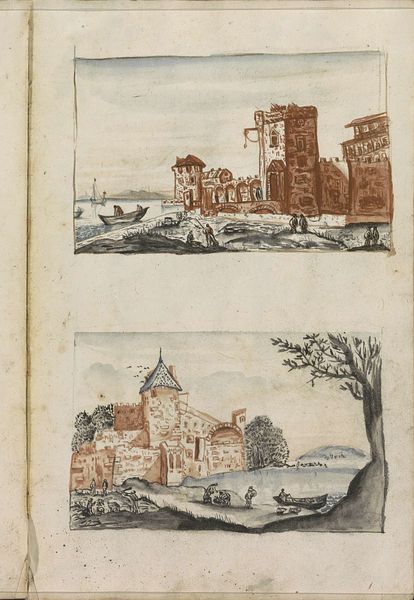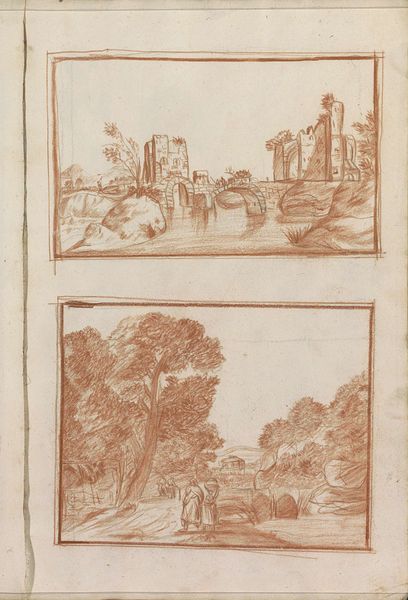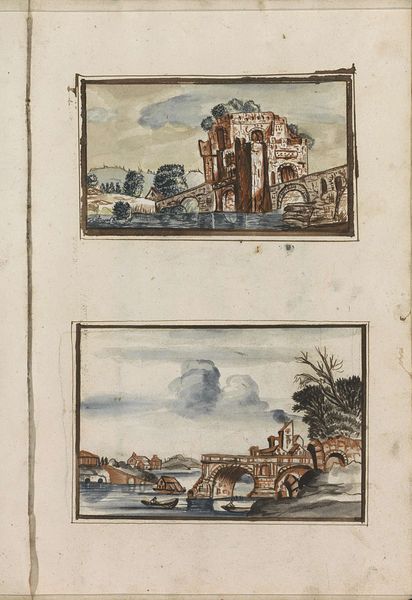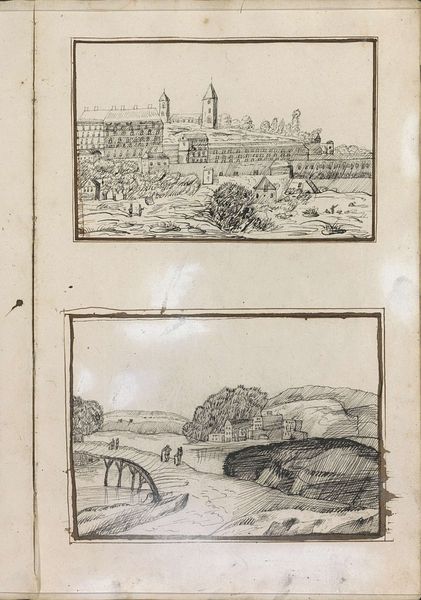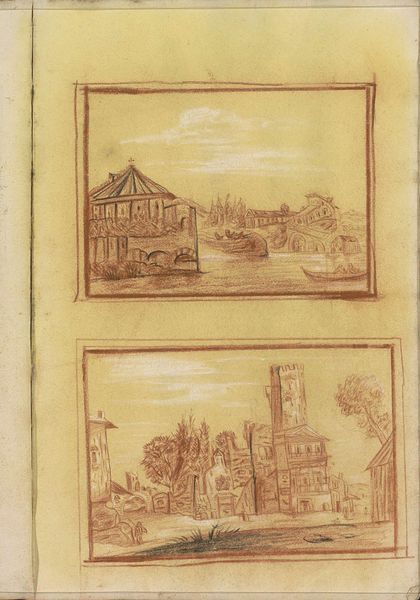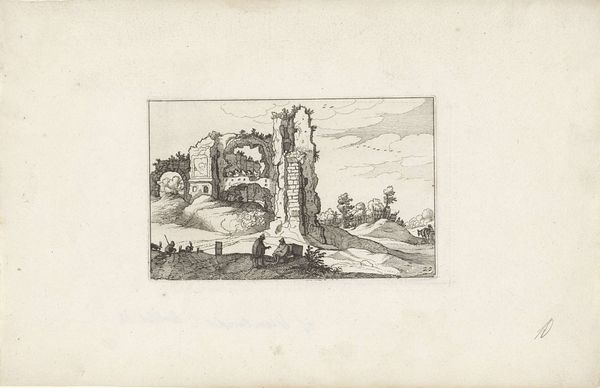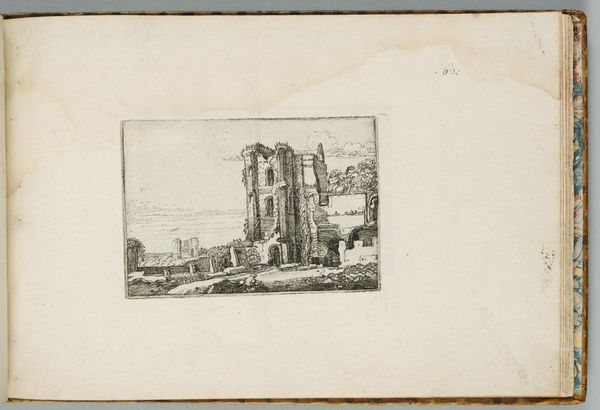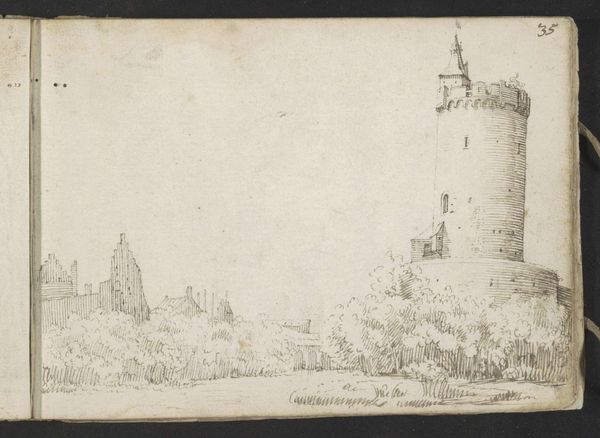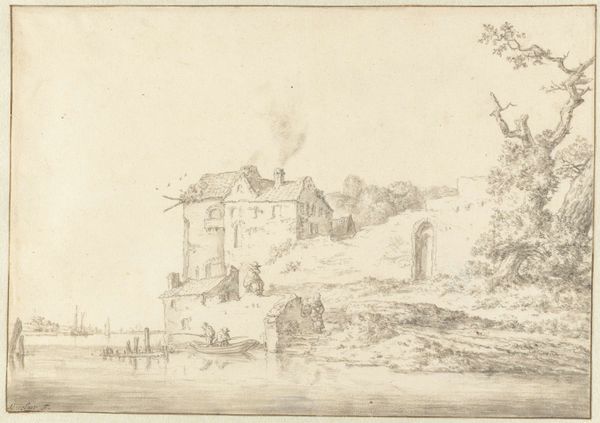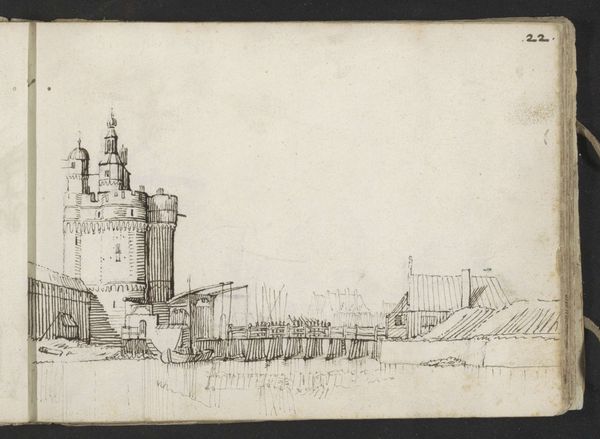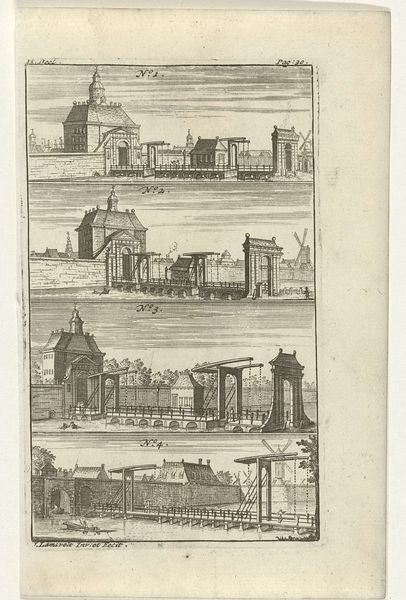
drawing, paper, ink, pencil
#
drawing
#
baroque
#
landscape
#
paper
#
ink
#
pencil
#
cityscape
#
realism
Copyright: Rijks Museum: Open Domain
Curator: Welcome. Before us is Hendrick van Beaumont's "Twee stadsgezichten," created in 1696 using ink, pencil, and paper. Two cityscapes rendered with remarkable detail in a single sheet. Editor: It's the fragility that strikes me first. Both scenes, perched precariously between ruin and reverie, evoke a distinct sense of melancholy. The medium certainly amplifies this. Curator: Indeed. Let's consider how Beaumont employs line. Notice the crispness of the ink work defining architectural forms juxtaposed against the softer, more diffuse shading achieved with the pencil. The artist crafts a clear visual hierarchy and draws attention to certain elements in the compositions. Editor: The towers especially. In both renderings, the imposing architecture becomes a symbolic focus—perhaps alluding to the transient nature of power and civilization. They almost feel like classical memento mori. Curator: It’s intriguing how van Beaumont marries realism with elements of baroque sensibility. Though his cityscapes demonstrate his dedication to portraying the empirical world, he freely adapts forms. Also notice that both compositions offer a contrast between decay and aspiration; ruined walls, alongside a cathedral’s dome. Editor: Absolutely. Given that maritime themes also figure prominently, it prompts me to see this as more than simple realism. The sailboats and bodies of water signal journey and transition. Perhaps the cityscapes represent two phases in the cyclical rise and fall of society and collective memory. Curator: Fascinating insight! Focusing on its formal qualities, van Beaumont created clear spatial distinctions through variations in line weight and tonal values. This technique allows the artist to subtly guide the viewer's eye throughout each cityscape. Editor: It's truly a powerful synthesis. Even though each scene differs markedly in tone, when viewed together they conjure this incredible visual tension— between land and sea, the grounded and the boundless, the known and the unknown. Curator: Studying the structures as Beaumont presents them to us reveals his sophisticated grasp of proportion, which allows each individual shape to interact dynamically with others, creating an enriching visual complexity. Editor: Thank you for illuminating such subtle dimensions within the image. It certainly invites us to consider not just what we see, but how we perceive history's echoes.
Comments
No comments
Be the first to comment and join the conversation on the ultimate creative platform.
